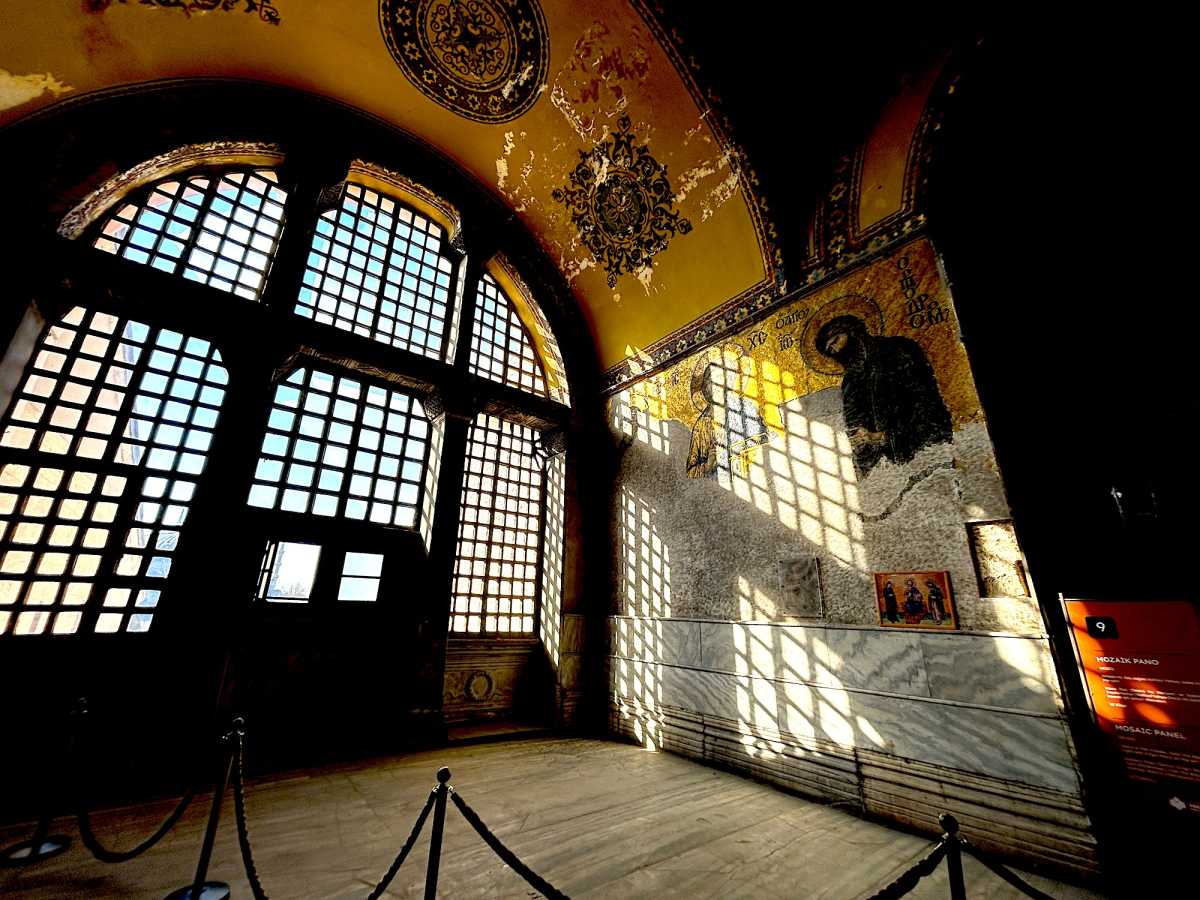If someone is looking forward to visiting a museum in Istanbul, Hagia Sophia would surely be one of the top choices. Built 1,700 years ago and still in use, this majestic monument is considered one of the most significant buildings in history. Hagia Sophia has served various purposes over time: first as a church, then a mosque, later a museum, and since 2020, it has been a mosque again. Throughout its history, this iconic structure has consistently garnered attention under different administrations.
The construction of Hagia Sophia was initiated during the reign of Constantine the Great, who also established Christianity as the state religion of the Byzantine Empire. However, after the conquest of Constantinople by Mehmet II, the church was converted into a mosque, which it remained until its transformation into a museum by Mustafa Kemal Atatürk in 1934. In 2020, the building was reopened as a mosque by the Turkish government under the name Hagia Sophia Grand Mosque (Turkish: Ayasofya-i Kebir Cami-i Şerifi). The third and second floors of the building are used to illustrate the history of the Roman and Ottoman Empires, respectively. Historical artifacts, displayed to the public for the first time, can be seen on the first floor. Finally, Roman cisterns are visible from the ground floor. Below, you can check out what is inside the Hagia Sophia Mosque:
The building is made up of a dome that is roughly 55 meters tall and has a base diameter of about 31 meters. Because of the pendentive mechanism used in the dome's design, it appears to be hanging in midair. This creates an impression of the interior's immense space and incredible immensity. A key component of the Byzantine architectural vision, the dome stood for the celestial sphere.
This 13th-century mosaic shows Christ Pantocrator pleading for humanity's salvation while being encircled by the Virgin Mary and John the Baptist. The Deesis, which showcases the sophisticated mosaic methods of the Byzantine era, is well known for its expressive quality and minute detail.

The column is used to treat ailments and has a hole in it. The column's unique characteristic is its one-sided hole, which is said to have healing properties when passed through. People can insert their thumbs into the rings inside the metal facade of the building and spin them to make wishes.
Also known as the Sweating column, local legend holds that it sweats and that the sweat has therapeutic properties.
A semicircular feature in the mosque wall that indicates the direction of the Ka'bah in Mecca is called a "mihrab." Muslims face this direction when they are praying. The altar used to be situated in the mihrab of the Hagia Sophia. It represents the structure's transformation from a church to a mosque.
During Friday prayers, the imam uses the Minbar as podium within the mosque to deliver sermons on welfare. It represents the importance and strength of gathering for prayer in the Islamic faith.
The main entrance of Hagia Sophia, which the Byzantine emperors alone used. A portion of the intricate mosaic artwork on the gate shows Emperor Leo V1 bending down to Chris.
The famous mosaic upon the gate depicts two emperors: Justinian I, who presents a miniature replica of Hagia Sophia to the Virgin Mary, and Constantine, who presents a miniature replica of Constantinople. It emphasizes the imperial family's mindset and the connection between the state and the church.
Along with their tombs, the Ottoman dynasty interred Selim II and Murad III, their spouses, and other family members close to the Hagia Sophia Museum.
The tombs have flawlessly finished interior and exterior adornment, giving them an ostentatiously classical architectural character.
A vast circular marble floor area surrounded by massive columns that served as the venue for the coronation rites of the Byzantine emperor. The empire's center lay at this location, which was used as a focal point for the coronation ceremonies.
Hagia Sophia is where Divan Yolu and Alemdar Streets meet. It stands across the Bluse Mosque from the southern side and rising next the the walls of Topkapi Palace Complex from the northern side.
Tram is the best option because Hagia Sophia is in the middle of a non-traffic area. Sultanahmet is the closest station and Gulhane is the second closest one. If you come by car, Yerebatan Street is where you can reach closest with the vehicle.
Blue Mosque
The Hippodrome of Constantinople
Topkapı Palace
Obelisk of Theodosius and the Serpent Column
Istanbul Archeology Museum
Basilica Cistern
This is the shortest way to witness the wonder of centuries in Istanbul! Almost 15 Centuries-Old Hagia Sophia is the icon of Istanbul. Its history uncovers the city of Istanbul. As Hagia Sophia has been serving as a mosque since 2020, the upper galleries have been prepared for a new era for visiting this great wonder of humanity.
Reserve your place here and make your Istanbul trip even more memorable!
Prepare to explore the iconic Hagia Sophia in Istanbul. After three years of anticipation, the doors are finally opening wide for visitors. Skip the ticket queue and grab your digital code here for seamless entry through security. The Hagia Sophia, a historic wonder standing for nearly 15 centuries, is ready to reveal its secrets. Let an official museum guide lead you through Istanbul's intriguing past. Inside the Hagia Sophia, you'll discover architectural wonders and fascinating religious art. From the intricate interior design to the remarkable pieces on display, it's a treat for history enthusiasts. Step back through ancient, medieval, and early modern eras all in one place.
What’s included:
Mr. Bowmik Haldar,
05 June, 2023A solution that we came up with is to think of sanitary pads packaging as you would tea. Tea comes individually packaged